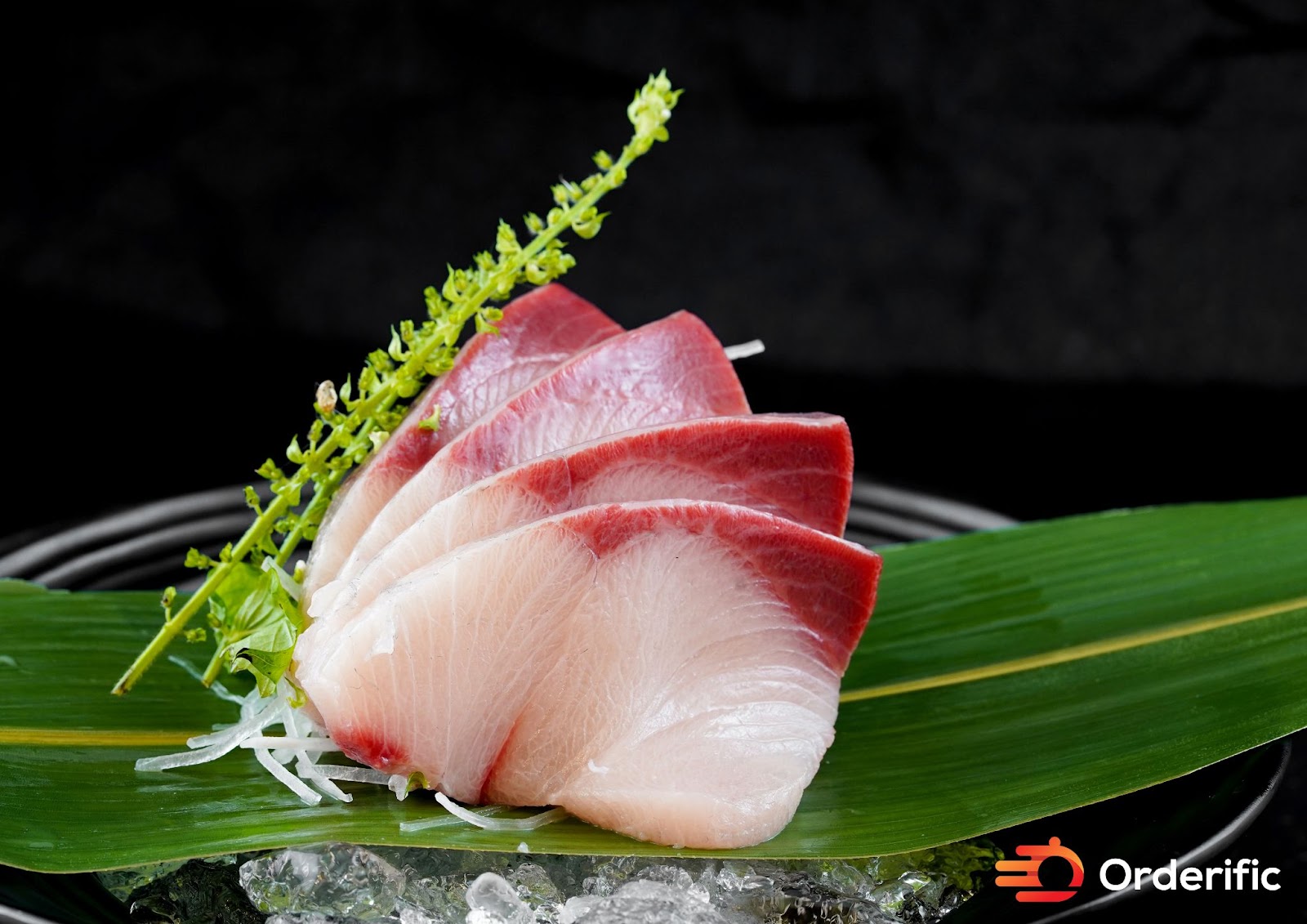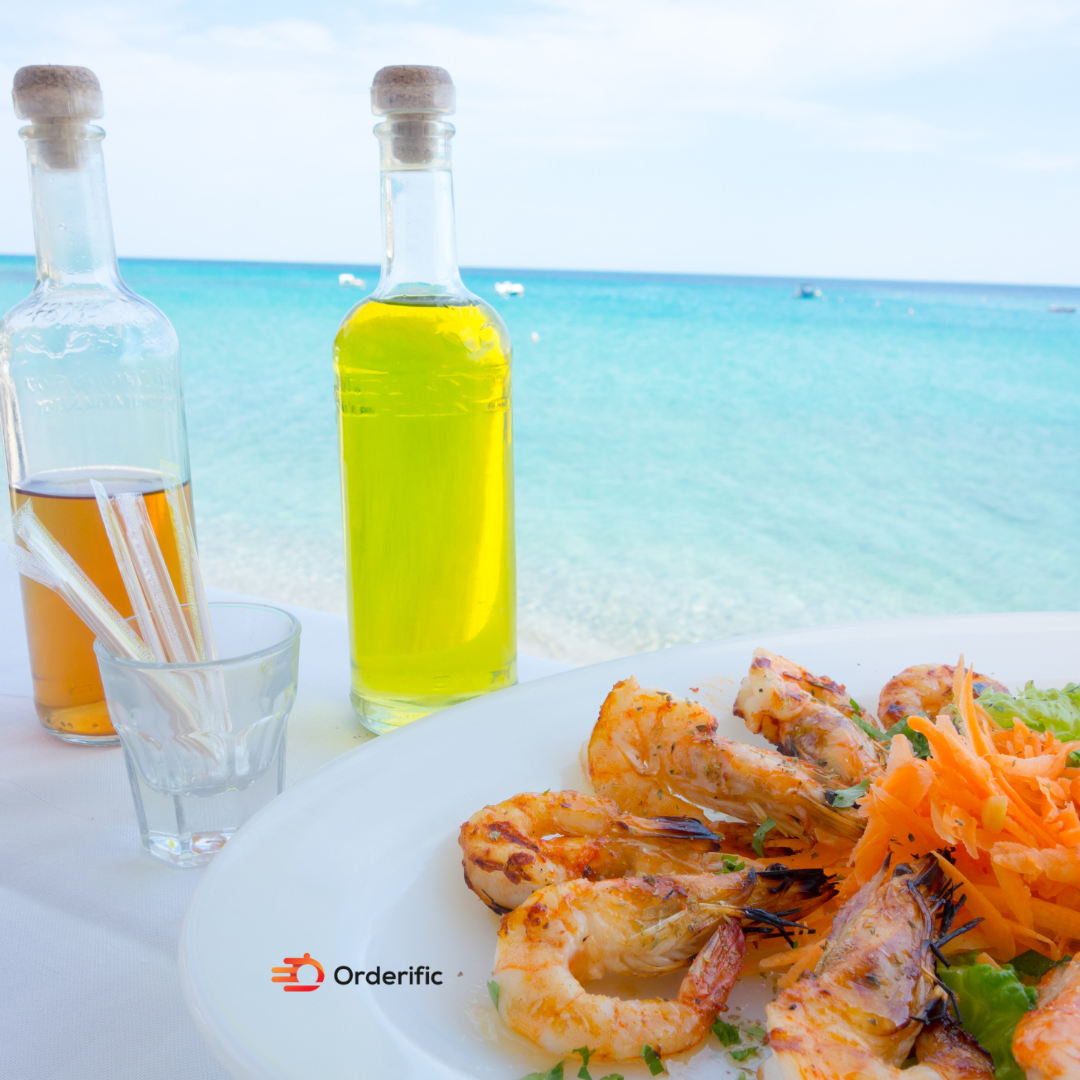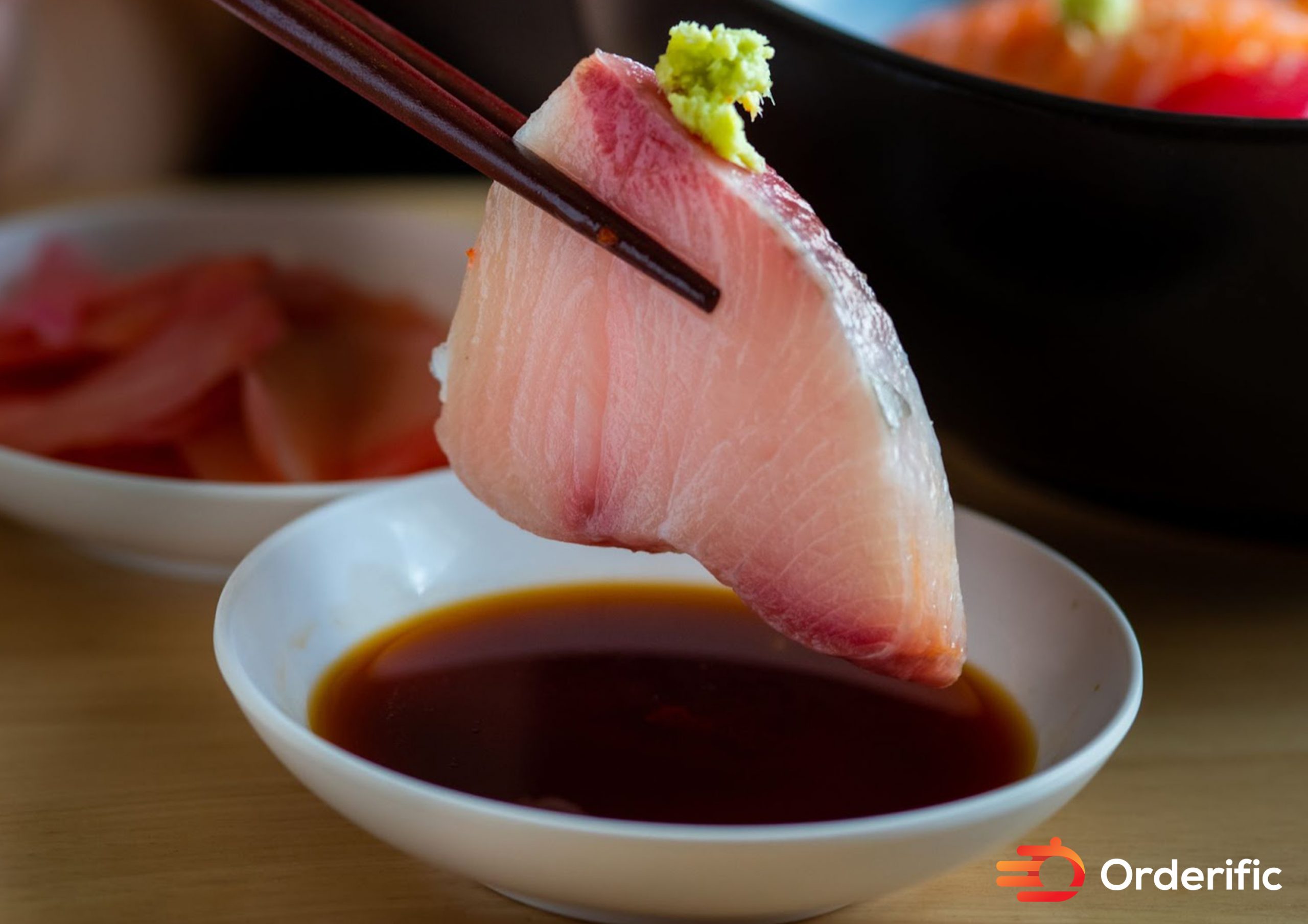Delving into the vast seafood realm, we encounter hamachi fish’s unmistakable flavor and texture, setting it apart from its counterparts.
Recognized as Japanese yellowtail, buri, or amberjack raw fish, hamachi is a favored option in Japanese cuisine, mainly lending itself to sushi and sashimi. Let’s look closer at unraveling the secrets that make this fish alluring and its significance in culinary delights.
The Nutritional Benefits of Hamachi Fish: Why It’s Good for You
A fusion of taste and nutrition from fresh seafood, hamachi fish brings to the plate an exquisite culinary experience and myriad health benefits. With its abundant protein and vital nutrients, incorporating hamachi into a well-rounded diet can be quite a delightful choice. Let’s dive into the reasons why!
Protein Powerhouse
Hamachi fish provides abundant top-notch protein encompassing all essential amino acids to support vital bodily functions. Protein is critical in regenerating tissues, producing enzymes, and enhancing immune function.
Including adequate protein in meals can also contribute to feelings of fullness, potentially aiding in weight management.
Omega-3 Fatty Acids
Hamachi fish is well-known for its remarkable nutritional benefits, mainly due to its abundance of Omega 3 fatty acids. These essential fats are critical in promoting cardiovascular health by lowering triglycerides, managing hypertension, and preventing harmful blood clots from forming.
Furthermore, optimizing brain health necessitates the integration of Omega-3 fatty acids. Scientific research indicates their promising potential in enhancing cognitive function and bolstering overall mental welfare.
Vitamins and Minerals Galore
Hamachi is a popular fish that provides a variety of essential vitamins and minerals. It is a valuable Vitamin D source, a nutrient vital for promoting strong bones and teeth. It is also associated with supporting immune system functionality.
Moreover, hamachi offers a multitude of B vitamins, including the crucial Vitamin B12. This vitamin plays a vital role in nerve function and facilitates the production of DNA and red blood cells.
Hamachi also boasts an abundance of selenium, an influential antioxidant that safeguards cells against harm and promotes cardiovascular well-being.
A Note on Calories and Fat
Despite containing more calories and fat than certain types of fish, it’s important to note that hamachi provides healthy unsaturated fats. Adding hamachi to a balanced diet can have positive effects on overall health.
In summary, hamachi is an excellent choice for those seeking a protein-packed, nutrient-dense meal. Its high-quality protein, heart-healthy fats, and abundant essential vitamins and minerals make it a nutritional powerhouse.
Whether enjoyed in sushi or sashimi form or used in various delicious recipes, hamachi can be a tasty addition to a well-rounded diet.
The Flavor Profile of Hamachi Fish: Mild and Versatile
If there were a hierarchy of flavors in the world of fish, hamachi would undoubtedly occupy a top spot. This delightful creature from the ocean depths offers an unparalleled tasting experience, all thanks to its subtle yet distinctive flavor profile. Let’s delve into what makes the taste of hamachi so exceptional and versatile.
Mild, But Rich
At first taste, hamachi greets the palate with a mellow sweetness. With a gentle sweetness, it lets the true essence of the sea take the spotlight. This quality makes it perfect for recipes that showcase the fish’s delicate flavors, like sushi and sashimi.
Unmistakably Umami
Umami, often referred to as the fifth taste, describes the savory flavor that certain foods have, and hamachi is no exception. Hamachi carries a distinct umami flavor that lingers on the palate.
This umami note gives it a depth of flavor that makes it such a popular choice in various Japanese dishes and other types of cuisine worldwide.
A Buttery Texture
The texture of hamachi is just as notable as its taste. The fish has a buttery, almost creamy texture that melts in the mouth. This texture is partly due to its high-fat content, evident in the characteristic marbling of the fish.
This smooth, rich texture complements its mild flavor perfectly, resulting in a truly luxurious eating experience.
Pairs Well With Others
Thanks to its mild yet rich flavor, hamachi pairs beautifully with many other flavors. From the sharpness of soy sauce and wasabi in sushi to the tangy freshness of citrus in a ceviche, hamachi holds its while complementing other ingredients.
Versatility is Key
Hamachi’s distinct yet adaptable flavor makes it an incredibly versatile ingredient. Experience the pure delight of savoring raw sashimi, appreciating its unparalleled taste and texture.
A sushi roll complements the tanginess of sushi rice and the vibrant, crisp accents of vegetables and herbs. It develops a subtly enhanced flavor when cooked, making it an exceptional ingredient for a wide range of mouthwatering dishes.
Overall, hamachi boasts a delightful flavor profile characterized by its mildness, richness, and remarkable versatility. It’s a delight for the taste buds and a star in many culinary creations. Whether someone is a fan of seafood or just starting to explore the world of fish, hamachi is a choice that will impress.
How to Cook Hamachi Fish: Tips and Recipes for Delicious Meals
Cooking with hamachi fish is a culinary delight. Discover some intriguing methods to get this mouthwatering fish ready.
Hamachi Sashimi
Sashimi is simply raw fish served thinly sliced. The key to great sashimi is fresh, high-quality fish and sharp knives.
Ingredients:
- Fresh Hamachi loin
- Soy sauce
- Wasabi
Instructions:
- First, ensure your Hamachi is fresh and has been stored properly. It should be stored at a temperature just above freezing and should be used within two days of purchasing.
- Rinse the fish under cold water and pat it dry with paper towels.
- Using a very sharp knife, slice the fish against the grain into thin pieces about 1/8 to 1/4 inch thick.
- Serve on a chilled plate with soy sauce and wasabi on the side.
Hamachi Sushi (Nigiri)
Nigiri is a type of sushi made of thin slices of raw fish over pressed vinegared rice.
Ingredients:
- Fresh Hamachi loin
- Sushi rice (prepared)
- Wasabi
Instructions:
- Slice the hamachi as you would for sashimi.
- Prepare sushi rice by following your favorite recipe. The rice should be slightly warm and sticky.
- Wet your hands and take about a tablespoon of sushi rice. Form it into an oblong shape in your palm.
- Smear a tiny bit of wasabi on the fish slice.
- Lay the slice of fish over the rice, draping it so it conforms to the shape of the rice.
- Serve with pickled ginger, soy sauce, and wasabi on the side.
Grilled Hamachi (Hamachi Kama)
Hamachi Kama refers to the collar of the fish, and it’s a delicacy in Japanese cuisine.
Ingredients:
- Hamachi collar
- Salt
- Pepper
- Lemon
- Optional: teriyaki sauce or soy sauce for basting
Instructions:
- Rinse the Hamachi collar under cold water and pat it dry.
- Season the collar generously with salt and pepper on both sides.
- Preheat your grill to a high heat.
- Once the grill is heated, reduce to medium heat and place the collar on the grill, skin-side down.
- Grill for about 6-8 minutes, until the skin is crispy and browned.
- Flip the collar and grill for another 6-8 minutes on the other side. If desired, you can baste the collar with teriyaki sauce or soy sauce during the last few minutes of grilling.
- The collar is done when the meat is opaque all the way through and flakes easily with a fork.
- Squeeze fresh lemon juice over the collar before serving.
Sourcing and Sustainability of Hamachi Fish: What to Look for When Buying
When buying hamachi, freshness is vital. Look for clear, bright eyes and firm, shiny flesh. If purchasing fillets, they should be translucent and without any discoloration.
Regarding sustainability, a significant portion of hamachi fish in the market are farmed, particularly in Japan and Australia. Look for fish sourced from farms with responsible aquaculture practices.
In case you want more content like this, visit Orderific right now!
FAQs
What is hamachi fish?
Hamachi fish, popularly called the Japanese yellowtail, buri, or Japanese amberjack, is a sought-after delicacy.
Where is hamachi fish typically found?
Hamachi fish is commonly found in the Pacific Ocean, particularly around Japan and Korea. They are also farmed in several countries.
What are the nutritional benefits of hamachi fish?
Hamachi fish offers a plethora of nutritional benefits. It’s rich in protein, Omega-3 fatty acids, and essential nutrients like Vitamin D, B vitamins, and selenium.
What is the flavor profile of hamachi fish?
Known for its delicately sweet flavor and luxuriously smooth texture, Hamachi fish holds a special place in various culinary creations.
How is hamachi fish typically prepared?
Hamachi, an exquisite fish, can delight your taste buds when experienced raw in sushi or sashimi. You can explore its flavors by grilling, broiling, or searing it.













